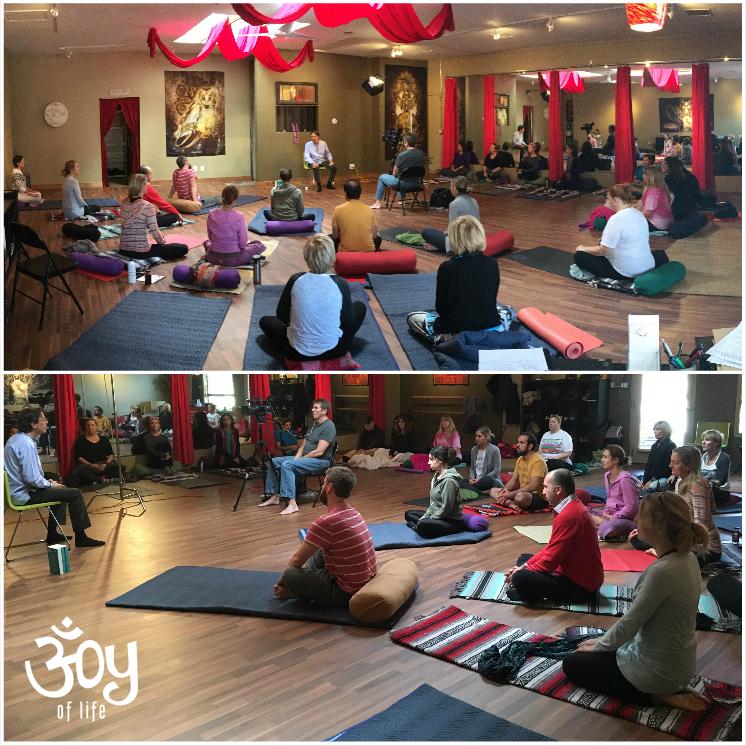In the hustle and bustle of teenage life, where the world often spins at a dizzying pace, finding moments of tranquility can feel like searching for a needle in a haystack. Amidst the whirlwind of school assignments, social dynamics, and extracurricular activities, stress and anxiety have become all too familiar companions for many teens. However, nestled within the ancient practice of yoga lies a powerful yet accessible tool that can offer a sanctuary of calm: breathing exercises. These practices, often overlooked, hold the potential to transform the inner chaos into serene clarity, guiding teens towards a state of relaxation and balance. In this article, we delve into the world of yogic breathing exercises, exploring how these simple yet profound techniques can become a beacon of peace for the modern teenager.
Finding Calm: The Science Behind Yoga Breathing Techniques
Yoga’s breathing techniques, often referred to as pranayama, are deeply rooted in the science of controlling the breath to influence both the mind and body. These practices are not just ancient traditions but are backed by modern science, revealing significant benefits for relaxation, especially for teens who are navigating through a myriad of emotions and stressors. When a teen engages in focused breathing, it can activate the parasympathetic nervous system, promoting a sense of calm and reducing anxiety.
Here are some popular yoga breathing exercises that can help in achieving relaxation:
- Ujjayi Breath: Often called the “ocean breath,” this technique involves inhaling and exhaling through the nose while slightly constricting the throat, creating a sound reminiscent of ocean waves. This can help teens concentrate and soothe their minds.
- Nadi Shodhana: Known as alternate nostril breathing, this practice balances the body’s energy channels and can be particularly effective in reducing stress and enhancing focus.
- Bhramari: This breathing exercise involves humming during exhalation, which can create a calming vibration, easing tension and anxiety.
By integrating these techniques into daily routines, teens can harness the power of mindful breathing to cultivate a tranquil state of mind, providing them with a valuable tool for managing stress and promoting overall well-being.
Guided Breaths: Step-by-Step Exercises for Teen Relaxation
Incorporating mindful breathing into daily routines can be transformative for teenagers, offering a pathway to tranquility and focus. Here are some simple yet effective breathing exercises drawn from yoga that can help teens unwind and find their center:
- Balloon Breath: Imagine your belly as a balloon. As you inhale deeply through the nose, let the “balloon” inflate, filling with air. Exhale slowly through the mouth, feeling the “balloon” gently deflate. This exercise promotes a sense of calm and helps regulate emotions.
- 4-7-8 Breathing: Inhale quietly through the nose for a count of four, hold the breath for a count of seven, and exhale completely through the mouth for a count of eight. This technique can ease anxiety and help with relaxation before sleep.
- Alternate Nostril Breathing: Place your right thumb over your right nostril and inhale through the left. Close the left nostril with your ring finger, release the right nostril, and exhale through it. Repeat on the other side. This exercise balances energy and clears the mind.
Practicing these exercises regularly can empower teens to navigate stress with ease, enhancing their overall well-being and mental clarity.

Breath Awareness: Cultivating Mindfulness Through Pranayama
Incorporating the gentle art of pranayama into daily life can significantly enhance mindfulness and relaxation, particularly for teenagers navigating the complexities of adolescence. By focusing on breath awareness, teens can cultivate a sense of calm and presence. Through pranayama, they can learn to connect with their breath in a way that promotes mental clarity and emotional balance.
- Diaphragmatic Breathing: Encourages deep inhalation, expanding the belly rather than the chest, to enhance oxygen flow and induce relaxation.
- Nadi Shodhana (Alternate Nostril Breathing): Balances the left and right hemispheres of the brain, fostering a harmonious state of mind.
- Ujjayi Breathing: Involves creating a gentle oceanic sound at the back of the throat, helping to synchronize breath with movement and quiet the mind.
- Kapalabhati (Skull Shining Breath): A more invigorating practice that clears the mind and energizes the body through rhythmic, forceful exhalations.
Each of these practices, with its unique rhythm and focus, invites teenagers to engage deeply with their inner world, creating a sanctuary of peace amid the hustle and bustle of daily life. The mindful attention cultivated through pranayama becomes a tool for resilience and relaxation, allowing teens to navigate their world with greater ease and confidence.

Inhale Peace: Integrating Breathing Practices into Daily Routines
Incorporating mindful breathing exercises into the daily lives of teens can serve as a powerful tool for relaxation and stress management. With the whirlwind of academic pressures, social dynamics, and extracurricular activities, teens often find themselves caught in a relentless cycle of stress. However, by practicing yoga-inspired breathing techniques, they can cultivate a sense of tranquility and focus. Here are a few simple yet effective practices that can be seamlessly integrated into their routines:
- Alternate Nostril Breathing (Nadi Shodhana): This technique helps balance the mind and body. Encourage teens to sit comfortably, close their eyes, and use their thumb and ring finger to alternately close each nostril while inhaling and exhaling deeply.
- 4-7-8 Breathing: A simple exercise that involves inhaling through the nose for a count of four, holding the breath for seven counts, and exhaling slowly through the mouth for eight counts. This practice is known to reduce anxiety and improve sleep.
- Belly Breathing (Diaphragmatic Breathing): Guide teens to place one hand on their chest and the other on their belly. As they inhale deeply, they should feel their belly expand. This method encourages full oxygen exchange and can help in grounding emotions.
By weaving these practices into their daily schedule, teens can learn to anchor themselves amidst chaos, enhancing their emotional resilience and overall well-being.

